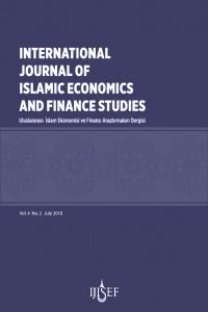Managing Zakat Through Institutions: Case of Malaysia
Uniquely, zakat is featured as the major tool of Islamic wealth redistribution that routinely collects designated amounts of public money from zakat payers and channels same to identified beneficiaries in accordance with the principles of the shari’ah. It is, therefore, essential to organize and develop institutions to manage this wealth. This paper analyzes the Malaysian zakat system, assesses its performance by studying the collection and disbursement mechanisms. The paper is qualitative descriptive-analytical in nature, it analyzes annual reports and interviews with the higher management of ZCC and religious councils. The paper focuses on data between the year 1991 to 2014/15. This paper finds that the Malaysian experience with managing zakat advanced technically in both distribution and collection. However, the practice of ‘distribution’ ought to be more sustainable, less consumption-based. Furthermore, the paper strongly identifies the need for establishing a database on needy people with the national welfare system and other relief NGO’s to reduce double spending.
Keywords:
Zakat Systems, Sustainable Spending Public Money,
___
- Abdul Wahab, M., Al-Junaid, A., Omar, M., Ghazali, A., Osman, J., & Arif, M. (1995). Malaysia. Institutional Framework of Zakah: Dimensions and Implications (pp. 297 - 378). Jeddah: Islamic Development Bank.
- Awang, R. (2011). Technical Comparison between Business Zakat and Tax on Business income in Malaysia. Malaysian Accounting Review, Vol. 10(No. 2), 13-25. Retrieved from http://ari.uitm.edu.my/main/images/MAR/vol10-2/chap2.pdf
- Bank Islam Malaysia. (2017). 2016 Anual Report.
- Bank Negara Malaysia. (2017). anual 2016 report. Bank Negara Malaysia.
- BNM. (2017). publications. Retrieved 8 10, 2017, from http://www.bnm.gov.my/index.php?ch=en_publication&pg=en_msb&ac=246&lang=en &uc=2
- Commission on Human Security. (2003). Human Security Now. New York: Commission on Human Security.
- Hamat, Z. (2009). Business Zakat Accounting and Taxation in Malaysia. Conference on Islamic Perspectives on Management and Finance (pp. 13-18). leicester: School of Management, University of leicester. Retrieved from https://core.ac.uk/download/pdf/11966303.pdf
- JAWHAR. (2017). Statistik Kutipan Zakat Seluruh Malaysia. Retrieved 3 2018, 8, from http://intranet.jawhar.gov.my/spmj/public/zkt_statistik_stat.php
- Lombardi, M., Mohanty, M., & Shim, I. (2017). BIS Working Papers No 607. The Teal Effects of Household Debt in the Short and Long Run. Retrieved from https://www.bis.org/publ/work607.pdf
- Malaysian Accounting Standards Board. (2006). Technical Release i -1. Accounting for Zakat on Business. Retrieved from http://www.masb.org.my/pdf.php?pdf=Accounting%20for%20Zakat%20TRi-1.pdf&file_path=uploadfile
- Ministry of Finance Malaysia. (2017). 2017 Economic Report. Ministry of Finance Malaysia. Retrieved from http://www.treasury.gov.my/pdf/economy/er/1617/chapter4.pdf
- Petronas. (2016). Annual Report 2016. Retrieved from http://www.petronas.com.my/investorrelations/Documents/annual-report/PETRONASAnnualReport2016.pdf PPZ MAIWP. (92-2016). BUKU LAPORAN. Retrieved from http://www.zakat.com.my/infoppz/laporan/buku-laporan/
- PWC. (2015). State-Owned Enterprises Catalysts for public value creation? Retrieved from https://www.pwc.com/gx/en/psrc/publications/assets/pwc-state-owned-enterprisepsrc.pdf
- Sen, A. (2000). Development as Freedom. New York: Anchor Books.
- ISSN: 2149-8393
- Başlangıç: 2015
- Yayıncı: Politik Ekonomik ve Sosyal Araştırmalar Merkezi
